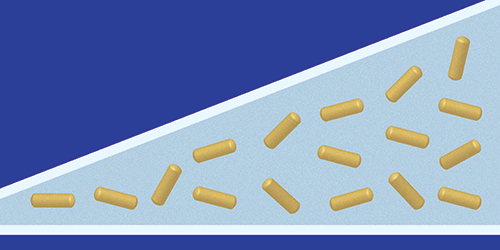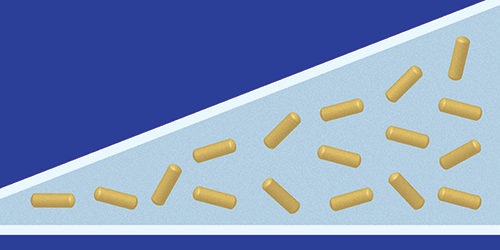Wedged Particles Make Crystals
Confining a suspension of particles in a tight space can force the particles to order in unusual patterns, forming structures with novel optical and electrical properties. Now Arnout Imhof and colleagues from Utrecht University in the Netherlands have examined the patterns that form when such particles are rod shaped. By confining the particles between walls with varying separations, they can control the arrangement of the rods and their orientation, which can’t be done with spherical particles. Because the rods have asymmetric optical properties, materials prepared in this way could potentially be used to direct the path of light.
The authors designed an experiment that allowed them to study different degrees of confinement at the same time. They used a wedge-shaped container, whose walls varied in separation from 8 to 40 micrometers, and filled it with a liquid containing 2-micrometer-long silicon rods. At the thinnest part of the wedge, the rods lie flat against the walls, forming only a single layer, and, while still in solution, arrange in a hexagonal lattice. But in the thicker segments, the rods take on out-of-plane orientations and form a variety of crystal structures, including square, rhombic and hexagonal lattices. Calculations performed by the authors suggest that the rod orientation depends sensitively on forces the rods exert on the walls and on each other. These parameters can be tuned by the wedge thickness. In future work, the authors plan to replace the microrods with metallic or semiconductor nanorods. Such nanorod-crystals could be used to make reconfigurable optical materials whose color can be altered by changing their thickness.
This research is published in Physical Review Letters.
–Katherine Wright





